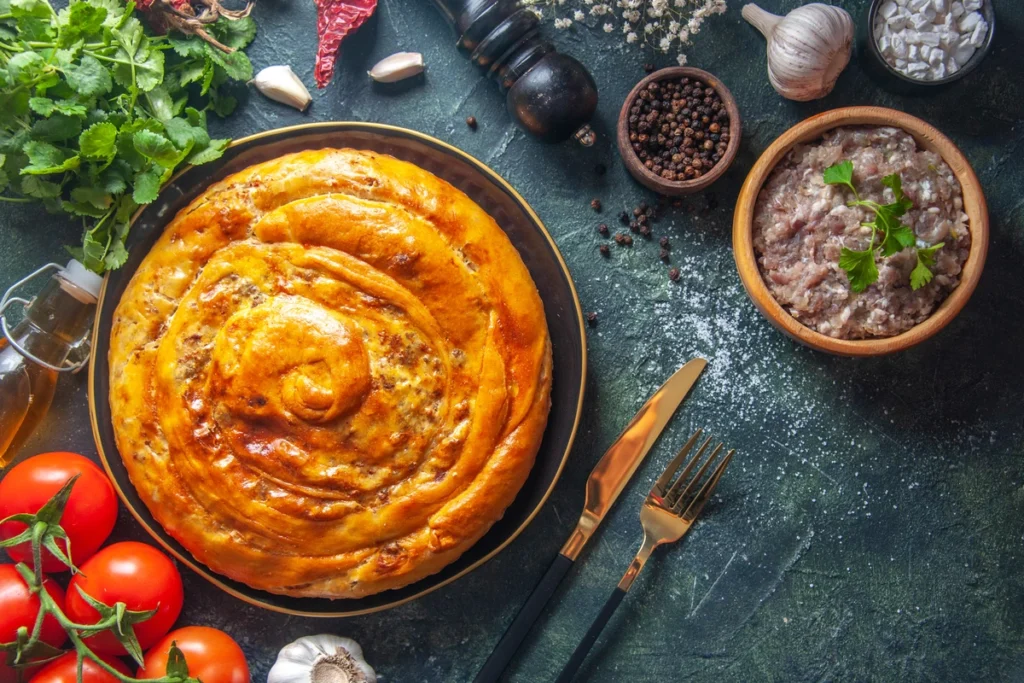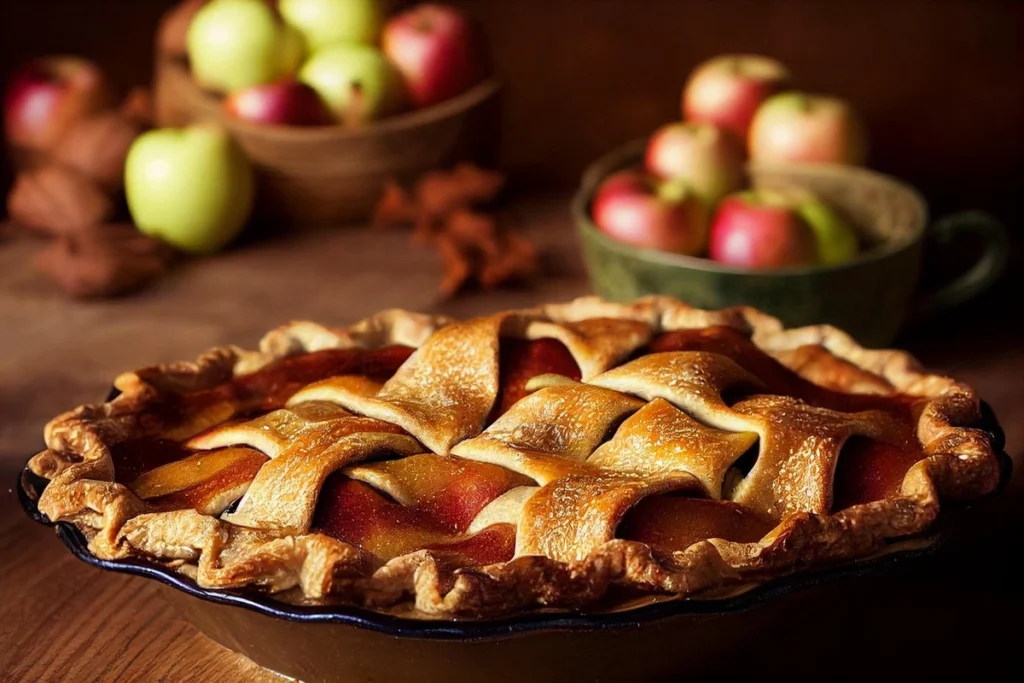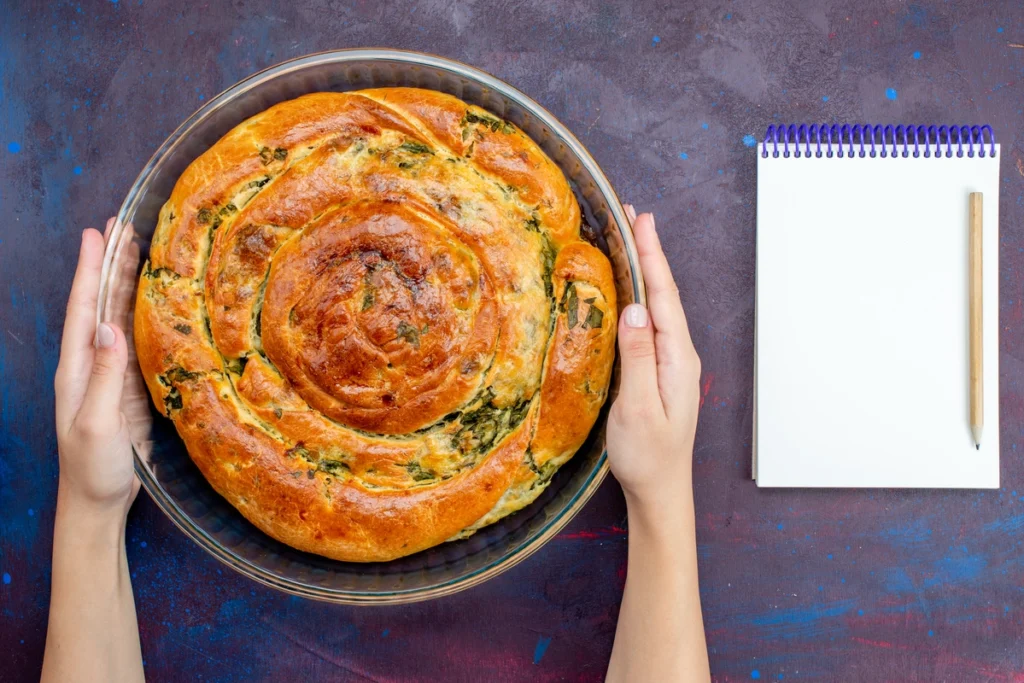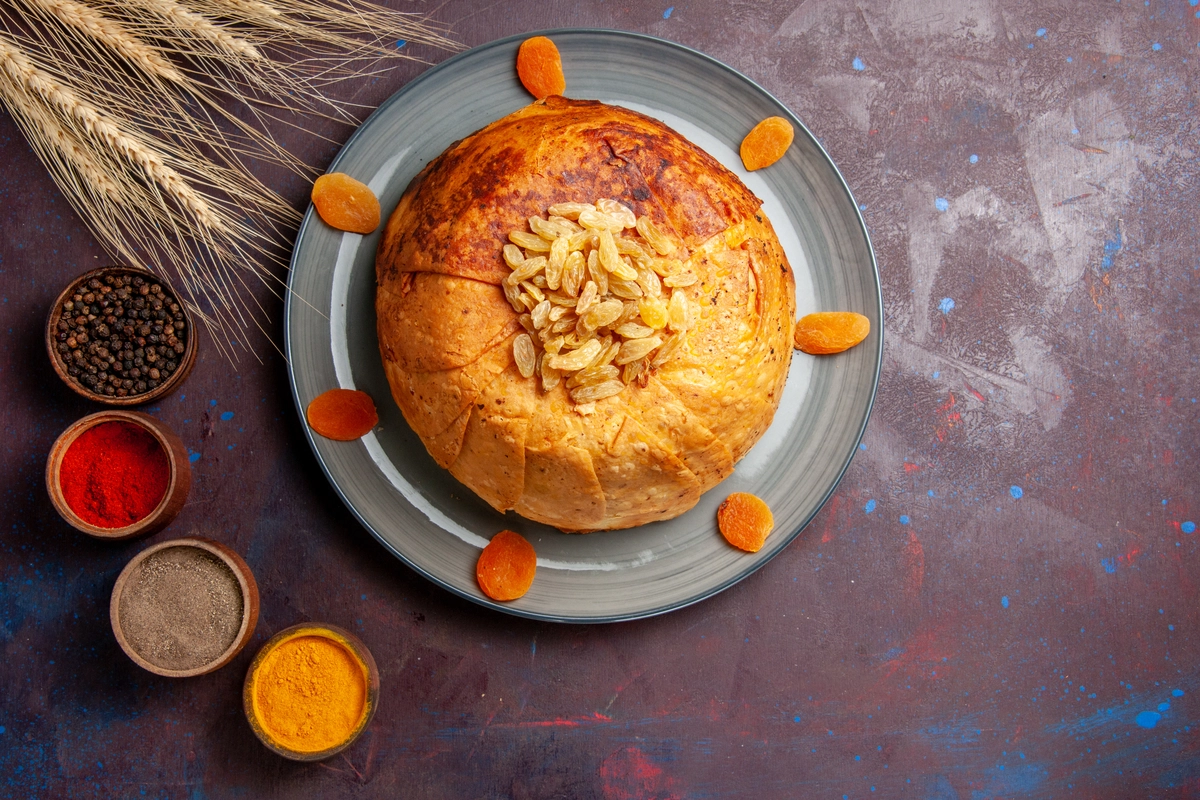Passover is a time of tradition, reflection, and celebration, where comforting dishes bring families together. Among these, Passover Potato Pie shines as a holiday favorite, combining simplicity, nostalgia, and warmth while meeting Passover dietary rules.
Made with potatoes, eggs, and matzo meal, this pie perfectly balances tradition and taste. It works as a centerpiece for your Seder table or a hearty side dish to complement other holiday favorites.
In this blog, we’ll explore the significance of potato dishes during Passover, list key ingredients, and provide a step-by-step guide to crafting the perfect Passover Potato Pie. We’ll also share creative variations and tips to make it a cherished family tradition.
The Significance of Potato Dishes in Passover Traditions
Potato dishes hold a special place in Passover traditions, offering a connection to both the religious and cultural significance of the holiday. As families and friends gather to commemorate the Exodus story, food plays a central role in reflecting the themes of resilience, survival, and the journey toward freedom. Among these dishes, potato-based recipes have become an integral part of Passover celebrations due to their versatility, affordability, and alignment with dietary restrictions.

A Practical Ingredient for Passover
One of the reasons potatoes became a staple during Passover is their simplicity and accessibility. When grains such as wheat, rye, barley, oats, and spelt are forbidden during the holiday unless prepared as matzo, potatoes emerge as a valuable substitute. Potatoes can be transformed into countless forms, including mashed, baked, fried, or incorporated into casseroles and pies. This adaptability ensures that they can be included in a wide variety of meals throughout the week of Passover.
Additionally, potatoes are universally available and affordable, making them an essential ingredient for families across socioeconomic backgrounds. Whether preparing an elaborate Seder feast or a modest meal, potatoes offer a reliable option to meet the dietary needs of the holiday.
Symbolism of Humility and Simplicity
The story of Passover is deeply rooted in themes of humility and simplicity, and potato dishes reflect these values. Historically, potatoes were considered a humble food, accessible to all and requiring minimal preparation. This resonates with the Passover message of remembering the hardships of slavery and appreciating the blessings of freedom.
Moreover, the simplicity of potato dishes aligns with the spirit of Passover, which emphasizes stripping away excess and focusing on what is essential. As families gather to tell the story of the Exodus, serving potato-based recipes becomes a way to honor this tradition and connect with the past.
A Link to Ashkenazi Culinary Heritage
For Ashkenazi Jewish communities, potato dishes are a cornerstone of Passover cuisine, reflecting the agricultural realities of Eastern Europe, where potatoes were a primary food source. Recipes such as potato kugel, latkes, and, of course, Passover potato pie are deeply ingrained in this heritage. These dishes not only provide sustenance but also serve as a reminder of the resourcefulness and creativity of Jewish cooks throughout history.
Adaptation Across Cultures
While potatoes are particularly prominent in Ashkenazi traditions, they have also been embraced by Sephardic and other Jewish communities worldwide. Depending on regional influences, potato dishes may be prepared with a variety of herbs, spices, and cooking methods, showcasing the diversity of Passover cuisine. For example, a Middle Eastern-inspired Passover potato pie might include cumin and coriander, adding a unique twist to the classic recipe.
Comfort Food for Generations
Potato dishes like Passover potato pie also serve as comfort food, evoking memories of family gatherings and cherished traditions. The act of preparing these dishes, often passed down through generations, strengthens familial bonds and reinforces the cultural significance of the holiday. For many, the aroma of a baking potato pie or the crisp edges of a kugel are as much a part of Passover as the Seder itself.
Key Ingredients for a Perfect Passover Potato Pie

Creating the perfect Passover Potato Pie involves choosing ingredients that enhance flavor and texture while meeting holiday dietary rules. Here are the essentials:
- Potatoes: Russet or Yukon Gold potatoes provide a creamy texture. Boil until tender, then mash for a smooth, cohesive filling.
- Eggs: Serve as a binding agent, adding richness and helping the filling set while baking. They also contribute a light, fluffy texture.
- Matzo Meal: A Passover-friendly substitute for flour, matzo meal absorbs moisture and ensures the pie holds its shape when sliced.
- Onions: Sautéed onions add savory sweetness and depth. Cook them until golden to bring out their natural sugars.
- Butter or Oil: These enrich the filling and create a golden crust. Butter enhances flavor, while oil adds a flaky texture to the crust.
- Herbs and Seasonings: Fresh or dried herbs like parsley, thyme, or dill add aromatic notes. Garlic, salt, and pepper round out the flavor.
- Crust: Typically made with matzo meal and potato starch, sometimes combined with eggs. It forms a sturdy base for the pie.
- Optional Add-ins: Variations might include grated cheese, sautéed mushrooms for umami, or a touch of sour cream or cream cheese for creaminess.
These ingredients come together to create a flavorful, comforting dish that’s perfect for any Passover meal.
Step-by-Step Guide to Making Passover Potato Pie
Making Passover Potato Pie is a rewarding process that results in a delicious, comforting dish perfect for your holiday table. By following this step-by-step guide, you’ll learn how to prepare a flavorful, well-textured pie with a golden crust and a creamy, savory filling. Let’s get started!

1: Prepare the Potatoes
Start by peeling and cutting the potatoes into evenly sized chunks. This will ensure they cook uniformly. For the best texture, use starchy potatoes like Russets or Yukon Golds. Place the potato chunks in a large pot and cover them with cold water. Add a pinch of salt to the water, then bring the pot to a boil over medium-high heat. Once boiling, reduce the heat and simmer for about 15-20 minutes, or until the potatoes are fork-tender.
2: Sauté the Onions
While the potatoes are cooking, heat a tablespoon or two of butter or oil in a pan over medium heat. Add the diced onions and sauté until they become soft and golden brown, about 7-10 minutes. The caramelization of the onions will bring out their sweetness, enhancing the overall flavor of the pie. Once done, remove from the heat and set aside.
3: Mash the Potatoes
Once the potatoes are cooked and tender, drain them well and return them to the pot. Using a potato masher or a hand mixer, mash the potatoes until smooth and lump-free. If you prefer a creamier consistency, you can also add a splash of warm chicken or vegetable broth, or even some butter, while mashing to achieve your desired texture.
4: Mix in the Eggs and Seasonings
Once your potatoes are mashed to perfection, it’s time to mix in the eggs, matzo meal, and seasonings. Add 2-3 large eggs (depending on the size of your potatoes) into the mashed potatoes, and mix well until fully incorporated. This will help bind the filling together as it bakes. Next, stir in the sautéed onions, along with your choice of herbs (parsley, thyme, or dill) and season generously with salt and pepper. Don’t forget to taste and adjust the seasoning as needed.
5: Prepare the Crust
For the crust, you’ll need a simple mixture of matzo meal, potato starch, eggs, and oil or butter. Start by combining about ½ cup of matzo meal with 2 tablespoons of potato starch in a bowl. Add one egg and a tablespoon of oil or melted butter, and stir until the mixture forms a dough-like consistency. This dough should be pliable enough to press into the bottom and sides of your pie dish.
6: Assemble the Pie
Preheat your oven to 375°F (190°C). Grease a 9-inch pie dish with a bit of oil or non-stick spray to prevent sticking. Press the prepared crust mixture evenly along the bottom and up the sides of the pie dish, creating a sturdy base for your filling.
Once the crust is ready, carefully spoon the mashed potato mixture into the dish, smoothing it out with a spatula to ensure an even layer. You can also sprinkle a little extra matzo meal on top for added texture or flavor, if desired.
7: Bake the Pie
Place the assembled pie in the preheated oven and bake for about 45 minutes, or until the top is golden brown and the pie is set in the center. Depending on your oven, this may take a little more or less time, so keep an eye on it as it bakes. You’ll know it’s done when the top is slightly crispy and the edges have a rich golden color.
8: Let the Pie Cool and Serve
Once your Passover Potato Pie is baked, remove it from the oven and allow it to cool for about 10 minutes before slicing. This will help the pie set properly and make slicing easier. Serve warm or at room temperature, garnished with fresh herbs for a beautiful touch. It’s great on its own or as a side dish to complement your other Passover offerings.
By following these easy steps, you’ll have a perfect Passover Potato Pie to share with family and friends. The combination of creamy mashed potatoes, savory onions, and a crispy matzo crust makes this dish a true holiday favorite. Enjoy!
Variations and Creative Twists on the Classic Recipe
While the classic Passover Potato Pie is a beloved dish that’s comforting and traditional, there are plenty of ways to make it your own by adding unique twists and variations. These creative additions allow you to personalize the pie, enhance its flavors, and experiment with new textures, all while keeping the spirit of the dish intact. Below are several ideas for variations and fun twists on the classic recipe:
1. Cheesy Passover Potato Pie
For a richer, more indulgent version, you can incorporate cheese into the filling. Grated sharp cheddar, Parmesan, or even a milder cheese like mozzarella can add a delightful creamy texture and a savory depth to the mashed potatoes. The cheese will melt into the filling, making each bite even more comforting. To keep it kosher for Passover, make sure to choose a kosher-for-Passover cheese, especially if you’re serving it during a Seder.
2. Herbed Passover Potato Pie
Add a burst of fresh flavor by incorporating a variety of herbs into the potato filling. Fresh parsley, thyme, rosemary, dill, or chives are great choices. Chopped fresh herbs can be mixed directly into the filling, while you can also sprinkle a bit on top before baking for a fragrant and colorful garnish. This variation gives the pie a light, fresh taste that pairs wonderfully with roasted meats or other traditional Passover dishes.
3. Mushroom and Caramelized Onion Passover Potato Pie
If you’re a fan of earthy, umami flavors, try adding sautéed mushrooms to your Passover Potato Pie. Mushrooms—such as cremini, shiitake, or portobello—can be cooked until tender and caramelized to bring out their rich flavor. Combine the mushrooms with the sautéed onions to create a savory, hearty filling that perfectly complements the mashed potatoes. The combination of potatoes, onions, and mushrooms creates a more complex and satisfying flavor profile.
4. Spicy Passover Potato Pie
For those who enjoy a little heat, adding a spicy kick to your Passover Potato Pie is an exciting twist. Try stirring in some chopped jalapeños, red pepper flakes, or a dash of hot sauce to the filling. The heat can be balanced with a touch of sour cream or cream cheese, which adds creaminess and mellows the spiciness. This variation is great for anyone who enjoys bold, zesty flavors.
5. Sweet Potato Passover Pie
A great twist on the classic recipe is to replace regular potatoes with sweet potatoes. The natural sweetness of the sweet potatoes adds a subtle contrast to the savory elements of the dish, creating a balance of flavors. You can mash the sweet potatoes just as you would regular potatoes and follow the same recipe. For added complexity, try mixing a little cinnamon, nutmeg, or brown sugar into the filling for a hint of sweetness that pairs perfectly with roasted vegetables and meats.
6. Spinach and Feta Passover Potato Pie
For a Mediterranean-inspired twist, add spinach and feta cheese to the filling. Cook fresh spinach until wilted and mix it into the mashed potatoes, then stir in crumbled feta for a salty, tangy contrast. This combination of spinach and feta brings a savory brightness to the pie, making it a great side dish that can complement a variety of proteins, from grilled lamb to roasted chicken.
7. Potato Pie with a Crunchy Topping
Instead of just relying on a basic crust, you can create a crunchy, golden topping for the pie. A topping made of crushed matzo, toasted breadcrumbs, or even a layer of crispy onions can add texture and extra flavor. Simply sprinkle your topping over the mashed potato filling before baking and let it brown to a perfect crunch. This variation adds an extra layer of contrast between the creamy filling and the crispy top.
8. Passover Potato Pie with Ground Meat
If you’re looking for a heartier dish, consider adding ground meat to the pie’s filling. Ground beef, lamb, turkey, or chicken can be sautéed with onions, garlic, and spices, then layered beneath the mashed potatoes for a savory, meat-filled version of the pie. This transformation turns the dish into a one-pot meal, making it a perfect option for larger gatherings or family-style dinners.
9. Vegan Passover Potato Pie
For those following a plant-based diet or simply looking for a lighter alternative, a vegan Passover Potato Pie is a great option. You can swap out eggs and dairy for plant-based alternatives. Use olive oil or vegan butter in place of regular butter, and replace eggs with a flaxseed mixture (1 tablespoon of ground flaxseed mixed with 3 tablespoons of water) or chickpea flour for binding. Nutritional yeast can also be used for a cheesy, umami flavor. This vegan version retains all the creamy goodness of the original while catering to different dietary preferences.
10. Passover Potato Pie with Roasted Garlic
Take the flavor up a notch by adding roasted garlic to the mashed potatoes. Roasting garlic brings out its natural sweetness and softens its sharpness, creating a rich, mellow flavor that infuses the filling. Simply roast a head of garlic in the oven until it’s soft, then squeeze the cloves out and mash them into your potatoes for a deep, aromatic flavor that pairs beautifully with the other ingredients.
These creative variations allow you to transform the classic Passover Potato Pie into something that suits your tastes and preferences. Whether you opt for a cheesy version, add savory mushrooms, or try a sweet potato twist, the possibilities are endless. By experimenting with different flavors and textures, you can make this dish uniquely your own and create new traditions for your Passover celebrations!
Serving and Storing Your Passover Potato Pie
A Passover Potato Pie can be the centerpiece of your holiday meal or a delicious side dish that complements other traditional dishes. Proper serving and storage will help maintain its flavor and texture, ensuring you enjoy it to the fullest whether you’re serving it fresh from the oven or saving leftovers for later. Here’s everything you need to know about serving and storing your Passover Potato Pie.
Serving Your Passover Potato Pie
- Let It Cool Slightly Before Serving
After baking, it’s a good idea to let your Passover Potato Pie rest for about 10-15 minutes. This allows the filling to set, making it easier to slice and serve. While the pie is cooling, you can garnish it with fresh herbs, such as parsley, thyme, or dill, for added color and fragrance. - Serve Warm or at Room Temperature
Serve Passover Potato Pie warm or at room temperature, depending on your preference and meal timing. For formal gatherings or a Seder, serve it warm to highlight its comforting, hearty nature. It also tastes great at room temperature, making it a convenient option for potlucks, picnics, or occasions requiring advance preparation. - Pair with Traditional Passover Dishes
The mild, savory flavors of the Passover Potato Pie make it an excellent side dish to serve alongside other traditional Passover foods, such as matzo ball soup, brisket, roasted chicken, or lamb.Passover meal. - Cut Into Slices or Squares
To serve, slice the pie into wedges, just like a regular pie, or cut it into squares for a more casual presentation. If you’re serving the pie as part of a larger buffet-style meal, cutting it into squares or smaller portions makes it easier for guests to grab a piece, especially if you have a crowd. - Accompany with Condiments or Sauces
For an added layer of flavor, you can serve your Passover Potato Pie with condiments like sour cream, apple sauce, or even a tangy chutney.
Storing Your Passover Potato Pie
- Refrigeration
If you have leftover Passover Potato Pie or you want to make it ahead of time, storing it properly is key to preserving its texture and flavor. Allow the pie to cool completely before refrigerating. Wrap it tightly in plastic wrap or cover it with aluminum foil to prevent it from drying out. - Freezing
Passover Potato Pie freezes well for 2-3 months. Cool completely before freezing, then wrap tightly in plastic wrap and foil, or use an airtight container or freezer bag. Label with the freezing date. To reheat, thaw overnight in the fridge, then bake at 350°F (175°C) for 20-30 minutes until warmed through. - Reheating Tips
To bring back the pie’s crisp crust and maintain the creamy filling, reheating in the oven is recommended rather than using a microwave, as the microwave can cause the crust to become soggy. Preheat your oven to 350°F (175°C) and cover the pie loosely with foil. Bake for about 15-20 minutes to warm it through. You can remove the foil during the last 5 minutes of baking to allow the crust to regain its crispy texture. - Individual Portions for Easy Serving
For convenience, freeze individual slices of the pie instead of the whole. Wrap each slice tightly and freeze. To reheat, bake slices at 350°F (175°C) for 10-15 minutes until warmed through. - Avoid Storing Too Long
While the pie can be stored for several days in the fridge or frozen for a few months, it’s always best to enjoy it within a few days for the freshest flavor and texture.
For more recipes, click on the links below:


1 thought on “Passover Potato Pie: A Comfort Food Tradition Made Easy”